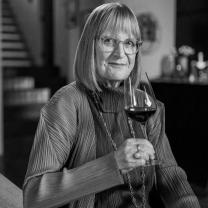Appellations
Jancis Robinson on 2022

Excerpts from JancisRobinson.com
"The most common word to describe these embryonic 2022s? ‘Surprising’.
The dry season translated into small grapes with thick skins, therefore berries that were unusually high not just in fermentable sugar from the heat but also in colouring matter, flavour and the tannins that ensure longevity. All that was missing in them was acidity that was exceptionally low after record high temperatures. So how come the resulting wines have such amazing freshness?
I put this question to many a wine producer and most of them just laughed – but laughed delightedly.
I heard Rémi Edange, who has been managing the Domaine de Chevalier estate for years, offering an explanation to some wine merchants as he poured them a sample of his 2022 at the Union des Grands Crus presentation of Pessac-Léognans citing Bordeaux’s modern winemaking godfather. ‘Professor Émile Peynaud always told me not to worry about ripe musts because the fermentation will create acidity. And that’s what happened in 2022. We have to be humble.’
So winemakers have learnt from previous hot vintages such as 2003 and 2018 what to do and what not to do, but so, it seems, have the vines themselves. Unlike some previous years, in 2022 the leaves on the vines stayed green and healthy – right through to November in some cases.
It’s certainly true that Bordeaux’s viticultural landscape has changed completely this century, having gone from bare earth to a riot of cover crops, Napa Valley style, designed to improve the microbiology of the soil and the health of the vines.
Some people in Bordeaux suggested that relatively cool nights towards the end of the season helped preserve some freshness, but probably just as important were the remarkably low pH levels in the grape juice. Usually, low acidity is accompanied by high pH levels but in 2022 pHs were unexpectedly lower than usual, which kept the musts microbiologically stable and positively rude with health and vigour.
Bordeaux lovers, brace yourselves!"
For the full article, click here
The Right Bank - Jancis Robinson
"Deep-coloured and voluptuous in the extreme but with no shortage of tannins for a long life lurking below the alluring surface. Merlot seemed to produce wines that were every bit as concentrated and noble as the revered Cabernet Sauvignon."
The Left Bank - James Lawther MW
"All in all, I found the characteristics of most of the appellations respected. Pauillac and St-Estèphe exuded power and concentration and St-Julien mellow fruit and a certain distinction. Margaux, as is often the case, was more varied, the terroir and winemaking playing a part, but also the higher alcohol, which provided more power."
Excerpts from www.JancisRobinson.com (Free for all)